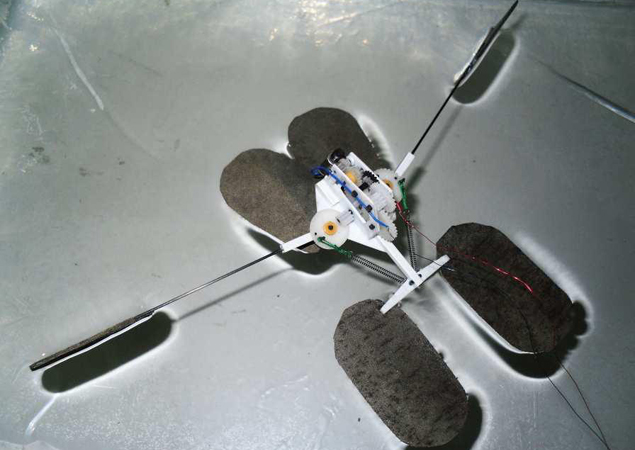- Home
- Others
- Others News
- Indian origin scientist develops new type of robotic brain
Indian-origin scientist develops new type of robotic brain

The system may lead to robots that think for themselves, learn, adapt and use active critique to work unsupervised.
Developed by Dr Jagannathan Sarangapani, from Missouri University of Science and Technology, the system makes use of current formation moving robots and introduces a fault-tolerant control design to improve the probability of completing a set task.
The new feedback system will allow a "follower" robot to take over as the "leader" robot if the original leader has a system or mechanical failure.
In a leader/follower formation, the lead robot is controlled through a nonholonomic system, meaning that the trajectory is set in advance, and the followers are tracing the same pattern that the leader takes by using sonar.
When a problem occurs and roles need to change to continue, the fault tolerant control system comes into use.
It uses reinforcement learning and active critique, both inspired by behaviourist psychology to show how machines act in environments to maximise work rate, to help the new, unmanned robot to estimate its new course.
Without this, the follower wouldn't have a path to follow and the task would fail.
"Imagine you have one operator in an office controlling 10 bulldozers remotely," said Sarangapani, the William A Rutledge - Emerson Electric Co Distinguished Professor in Electrical Engineering at S&T.
"In the event that the lead one suffers a mechanical problem, this hardware allows the work to continue," said Sarangapani.
The innovative research can be applied to robotic security surveillance, mining and even aerial manoeuvring.
Sarangapani believes that the research is most important for aerial vehicles. When a helicopter is in flight, faults can now be detected and accommodated.
This means that instead of a catastrophic failure resulting in a potentially fatal crash, the system can allow for a better chance for an emergency landing instead.
The fault tolerance would notice a problem and essentially shut down that malfunctioning part while maintaining slight control of the overall vehicle.
"The end goal is to push robotics to the next level," said Sarangapani.
"I want robots to think for themselves, to learn, adapt and use active critique to work unsupervised. A self-aware robot will eventually be here, it is just a matter of time, he said.
Catch the latest from the Consumer Electronics Show on Gadgets 360, at our CES 2026 hub.
- Samsung Galaxy Unpacked 2025
- ChatGPT
- Redmi Note 14 Pro+
- iPhone 16
- Apple Vision Pro
- Oneplus 12
- OnePlus Nord CE 3 Lite 5G
- iPhone 13
- Xiaomi 14 Pro
- Oppo Find N3
- Tecno Spark Go (2023)
- Realme V30
- Best Phones Under 25000
- Samsung Galaxy S24 Series
- Cryptocurrency
- iQoo 12
- Samsung Galaxy S24 Ultra
- Giottus
- Samsung Galaxy Z Flip 5
- Apple 'Scary Fast'
- Housefull 5
- GoPro Hero 12 Black Review
- Invincible Season 2
- JioGlass
- HD Ready TV
- Laptop Under 50000
- Smartwatch Under 10000
- Latest Mobile Phones
- Compare Phones
- OPPO Reno 15 Pro Max
- Honor Win RT
- Honor Win
- Xiaomi 17 Ultra Leica Edition
- Xiaomi 17 Ultra
- Huawei Nova 15
- Huawei Nova 15 Pro
- Huawei Nova 15 Ultra
- Asus ProArt P16
- MacBook Pro 14-inch (M5, 2025)
- OPPO Pad Air 5
- Huawei MatePad 11.5 (2026)
- Xiaomi Watch 5
- Huawei Watch 10th Anniversary Edition
- Acerpure Nitro Z Series 100-inch QLED TV
- Samsung 43 Inch LED Ultra HD (4K) Smart TV (UA43UE81AFULXL)
- Asus ROG Ally
- Nintendo Switch Lite
- Haier 1.6 Ton 5 Star Inverter Split AC (HSU19G-MZAID5BN-INV)
- Haier 1.6 Ton 5 Star Inverter Split AC (HSU19G-MZAIM5BN-INV)












